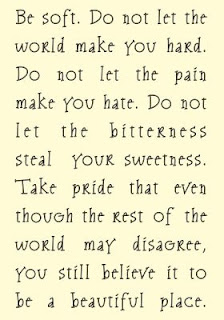NY Post
written by Jennifer Ceaser
Tuesday June 21, 2016
Despite the recent terror attack in Orlando, LGBT Pride events will continue as planned across the globe throughout the summer months.
(For one, New York City’s massive PrideFest is this coming weekend.)
But while Manhattan’s parade may be among the world’s largest, Gotham is hardly the only LGBT-friendly town worth visiting.
Europe, with its long tradition of LGBT acceptance, also knows a thing or two about celebrating pride — even in the face of adversity — and these five cities do it best.
Stockholm
Scandinavia’s biggest LGBT party, Stockholm Pride (July 25-31) stretches a full week, with much of the action taking place in Tantolunden, a huge green space in the city center.
The festivities culminate in a 50,000-strong parade that draws half a million spectators as it winds through Stockholm’s narrow cobblestone streets.
The first Stockholm Pride took place in 1998, but the Swedish capital has long been a leader in LGBT rights: in 1944, homosexual relationships were declared legal in Sweden, and in 1972, it became the first county in the world to allow legal gender change for transsexuals.
Such progressiveness meant that Stockholm never established a true “gayborhood” — though you can find a large number of gay clubs in Gamla Stan (Old Town) and the hip Södermalm neighborhood.
Amsterdam
It doesn’t get much gay-friendlier than the Netherlands: It was the first country to legalize same-sex marriage and to legally marry a gay couple.
(The ceremony, in April 2001, took place in Amsterdam, officiated by then mayor Job Cohen.)
The capital boasts hundreds of LGBT-oriented venues — hotels, clubs, bookstores, bathhouses — as well as Pink Point, a kiosk that provides information about the city’s gay community.
So it’s no surprise that Amsterdam hosts one of the globe’s biggest gay pride celebrations, EuroPride (July 23-Aug. 7), which spans two weeks and attracts 500,000-plus visitors.
Among this year’s highlights: a human rights concert on July 24 at the famed Dam Square with a performance by Eurovision winner Conchita Wurst.
But what makes EuroPride truly unique is its Canal Parade, which takes place entirely on water.
Eighty boats carrying drag queens, muscled men in body paint (and little else) and flamboyant, rainbow-hued supporters of all kinds sail through miles of the city’s waterways, as crowds gather along the canal banks to cheer them on.
Zurich
The only Swiss city to have an openly gay female mayor, Corine Mauch, Zurich is known for its tolerance and open-minded stance on civil rights — including LGBT rights.
Which means being gay here is a non-issue; in fact, in many of the so-called “gay” venues you’ll find a mixed crowd.
That said, the Niederdorf quarter is a popular area for the LGBT community and is home to Predigerhof Bistro Bar, one of the city’s top gay bars.
While Zurich Pride is still growing — the three-day event just wrapped up its seventh year, with around 30,000 visitors — the city is better known as the site for the world’s largest techno party, Street Parade (Aug. 13), which attracts nearly a million people.
Though not officially a gay event, the lakeside festival, which preaches “peace, tolerance and unity,” is hugely popular among the house music-loving LGBT crowd.
Barcelona
Looking at the fun, freewheeling, gay-friendly Barcelona of today, it’s hard to believe that its LGBT movement is only a few decades old.
Because homosexuality was illegal under dictator Francisco Franco’s regime, it wasn’t until after his death in 1975 that Spain’s gay scene was allowed to flourish.
The country’s first gay disco didn’t open until 1980 — in Sitges, a gay seaside resort community just outside of Barcelona.
But the Catalonian capital quickly made up for lost time and now has one of Europe’s top LGBT scenes, with much of it concentrated in the Eixample (pronounced Eh-hem-play) district — nicknamed “Gaixample” for its many gay bars, clubs, bookstores and hotels.
Coming up is Pride Barcelona (June 28-July 9) whose highlights include a daylong celebration at the water park Illa Fantasia, a “High Heels” race, the biggest foam party in Europe and a parade through Barcelona’s main streets. Circuit Festival Barcelona (Aug. 2-14), meanwhile, attracts more than 70,000 gay men with its DJs and pool-party events.
Milan
Italy approved same-sex civil unions last month, so this year’s Milano Pride week (June 18-25) promises to be a truly celebratory.
It concludes with a parade through the ancient city.
Even as the country inches toward being more gay-friendly, Milan has been so for some time — due in large part to its standing as a global fashion capital.
Nevertheless, a membership card is necessary to enter gay clubs and saunas here — but it’s easy to obtain at any gay venue.
While Via Sammartini is considered the main “gay street,” Milan’s gay bars are scattered throughout the city.






































No comments:
Post a Comment